4 ways to make shots easier for your kids
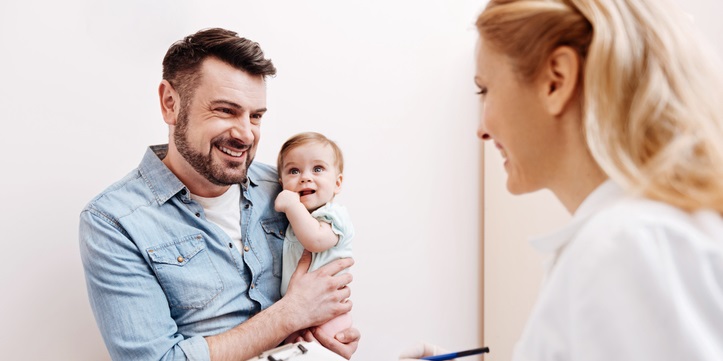
Written by Kelly Thompson, a Child Life specialist at Kentucky Children's Hospital.
The first thing many kids ask when they learn that they have to go to the hospital or doctor’s office is, “Do I have to get a shot?” Fear of shots and needle phobia can emerge in childhood when kids have had difficult or traumatic experiences getting routine immunizations.
Being held down for immunizations or other procedures can increase your child’s anxiety and distress and can make them feel especially vulnerable and threatened.
Research has shown that children allowed to sit up during immunizations display significantly less anxiety. However, some children may not be able to hold still by themselves. Comfort positions allow you to hold your child during immunizations or other stressful procedures. These positions have been shown to decrease stress and anxiety in children, and they give you an active role in your child's medical care.
Here's how to perform four of these positions:
Back-to-chest hold
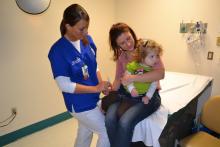
Your child sits on the your lap facing outwards with their back touching your chest. You can secure your child’s arms in a secure, hug-like hold. If necessary, you can cross your legs over your child’s legs to decrease leg movement.
Chest-to-chest hold
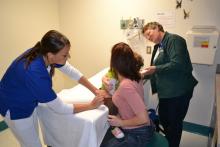
Your child can sit on the table or on your lap facing you in a “bear hug” hold. Your child’s legs can hang off the table or go around your waist and be secured by a staff member during immunizations. This position is better for children who benefit from having distractions or don’t want to watch getting a shot.
Side-sitting hold
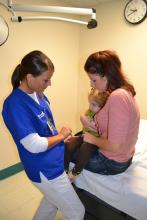
Your child can sit on your lap facing to the side. You can hold your child’s arms in a hug-like hold while a staff member holds your child’s leg during immunizations.
Cradle hold
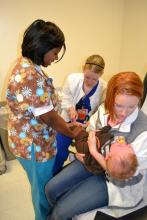
You can hold your baby in your arms and tight against your chest while staff members hold your baby’s leg during immunization. This position is ideal for mothers who want to breastfeed during or after immunizations to help comfort and calm the baby even more.
These positions can be used and adapted to accommodate immunizations given on a child’s upper thigh or on an older child’s arm. While children may still cry when getting a shot, children held in comfort positions tend to calm faster than children who are held down.
You should practice comfort positions with your child at home prior to immunizations when your child is less likely to be upset or anxious. This will also help you feel more comfortable using the hold at the doctor’s office later on. You should be honest with your children and acknowledge that shots can hurt.
Other strategies for helping children during immunizations include:
- Watching a favorite TV show or playing with a toy.
- Counting.
- Taking deep breaths.
- Receiving a small reward afterward.
If children are especially anxious or have had previous traumatic immunization experiences, you can talk to your doctor about getting a numbing cream to help decrease pain with shots.




